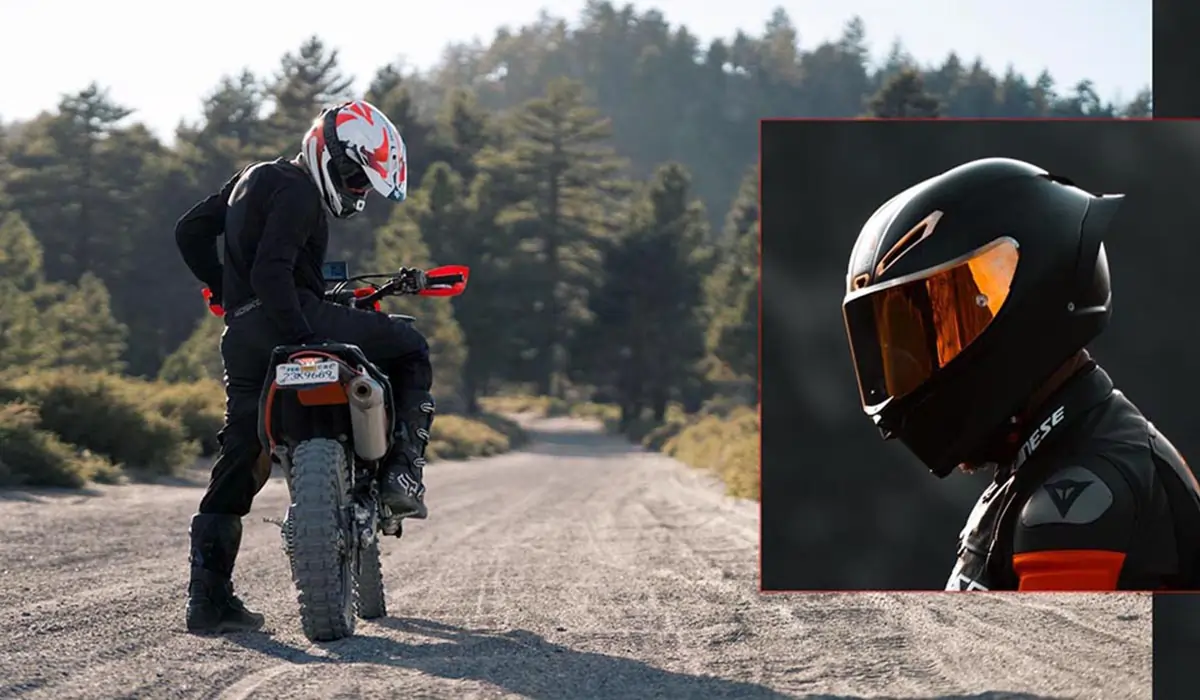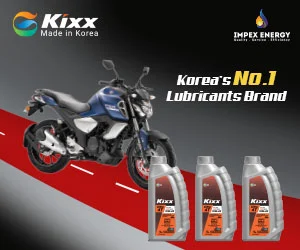Shares 2
Certified Helmets For Motorcycle Riders – A Brief Discussion
Last updated on 06-Apr-2025 , By Badhon Roy
The helmet is an essential accessory or gear for motorcycle riders, serving as the most important safety equipment. Did you know that a certified helmet reduces the risk of head injuries in accidents by 69% and the risk of fatalities by 42%?
Therefore, we always advise and encourage riders to avoid using substandard helmets and choose certified ones instead. In this article, we will comprehensively discuss the history and evolution of certified helmets, how to select the proper size, and the types of helmets suitable for different types of riders.

Certified Helmets For Motorcycle Riders
Using a high-quality helmet is crucial not only to avoid fines or comply with legal obligations but also to protect the most sensitive part of the human body, your head in the event of an accident. There was a time when riders were indifferent to wearing helmets, and some still are. However, the positive change is that awareness about helmets is increasing, and many riders are opting for certified helmets.

Motorcycle Helmets - History
Motorcycles became popular in the early 19th century, but there was no specific use of helmets for riders initially. Around 1914, British physician Dr. Eric Gardner observed that he had to treat at least one motorcyclist every two weeks for severe head injuries. Deeply concerned, he developed a helmet using cork, canvas, and shellac, which he presented to the Auto Cycle Union.
Also Read: ILM Z-302 Helmet Price In Bangladesh
Although initially rejected and opposed by riders, Dr. Eric’s request led to the authorities of the Isle of Man TT racing event mandating helmet use during races. After the race, event officials and the medical team thanked Dr. Eric, noting that for the first time, there were no severe injuries or fatalities during the event, all thanks to helmet use. Thus, helmets gradually gained popularity.
The first helmet-related law was enacted in May 1935 after the tragic death of British Army officer Thomas Edward Lawrence in a road accident. Commercial helmet production began in the 1950s, with the first safety helmets for motorcycles introduced by the Crash Helmet Company. Later, brands like Cromwell and Bell gained prominence, with Bell’s 500 model being considered a predecessor to modern helmets.
Evolution of Motorcycle Helmets
Initially, helmets were made of cork, leather, and foam. These were lightweight and primarily protected the top of the head. While half-face designs were effective in safeguarding the skull, they left the face and jaw unprotected.
In 1968, Bell Helmets introduced the first full-face helmet, the Bell Star, designed primarily for racers. By the 1970s, with motorcycles becoming faster and more advanced, full-face helmets gained popularity among everyday riders.
Also Read: Tips on How To Paint and Modify Your Helmet
By the 1980s, stronger materials like fiberglass and Kevlar were incorporated into helmets, along with visors for protection against dust, rain, and insects. Improved ventilation systems also made long rides more comfortable.
By the 1990s, modular helmets, combining the benefits of half-face and full-face designs, emerged with features allowing riders to open or close the front section conveniently. Since the 2000s, helmets have evolved to include advanced safety and technological features, continuously improving their performance and reliability.
Motorcycle Helmet Certifications
Helmet certification ensures safety standards, which are awarded after rigorous tests for impact, penetration, chin strap strength, thermal resistance, visor performance, etc. Common certifications include:
DOT (Department of Transportation): A U.S. standard that tests helmets under FMVSS 218 regulations.
ECE (Economic Commission for Europe): A European standard, with ECE 22.05 being one of the safest, and the newer ECE 22.06 offering enhanced safety.
Snell: Known for strict standards, this certification is ideal for racing and high-speed riding.
SHARP (Safety Helmet Assessment and Rating Program): A U.K. standard, providing a 5-star overall safety rating system.
ISI (Indian Standards Institute): A standard mandatory for helmets made in India, issued by the Bureau of Indian Standards (BIS). However, it is less accepted internationally compared to the above certifications.
For general riders, DOT- or ECE-certified helmets are recommended as they are widely available and internationally recognized.
Proper Sizing for Motorcycle Helmets
Buying a certified helmet isn’t enough; an improperly sized helmet can compromise safety instead of ensuring it. Here’s how to measure for the right fit:
Use a measuring tape around your forehead (just above the eyebrows) and over the widest part of your head (above the ears) to determine your head’s circumference. For example, the average measurement might be 56–58 cm.
Refer to the size chart provided by the helmet brand and choose the appropriate size. Common sizes are:
XS: 53–54 cm
S: 55–56 cm
M: 57–58 cm
L: 59–60 cm
XL: 61–62 cm
Try the helmet before purchase. Ensure it fits snugly—neither too tight nor too loose. Check if it stays firmly in place when you move your head. Adequate space for the jaw and a proper viewing angle through the visor are essential.
In Bangladesh, certified helmets from brands like GearX, MT, Yohe, LS2, Bilmola, Vega, Axor, Axxis, NZI, Fibra, Studds, SMK, Shark, Scorpion, and Suomy are available, ranging from BDT 3,000 to over a lakh. It’s worth investing in your safety.
Choosing the Right Helmet Based on Riding Style
Urban Riders: Half-face helmets offer comfort for low-speed city riding.
Long-Distance Riders: Full-face helmets provide better protection and comfort for extended usage. Modular helmets are versatile for both city and highway conditions.
Also Read: Caberg Helmets - অফিশিয়ালি এখন বাংলাদেশে । বাইকবিডি
High-Speed Riders: Racing helmets made of durable materials like Kevlar and carbon fiber with aerodynamic designs are essential.
Off-Road Riders: Dirt helmets protect against dust, debris, and stones commonly encountered in such environments.
Dear Bikers, always wear a certified helmet and ride safely.
T
Published by Badhon Roy















